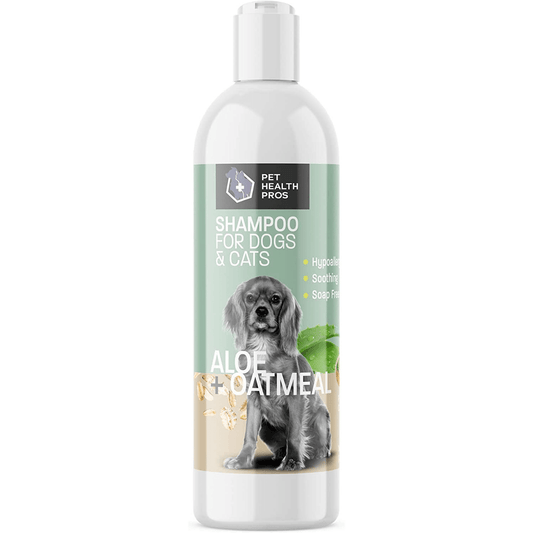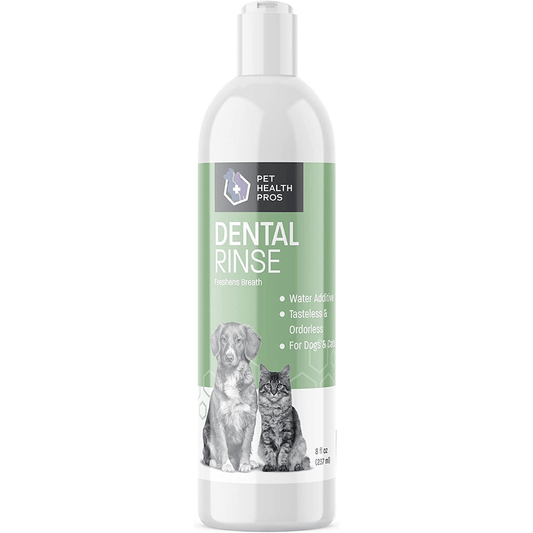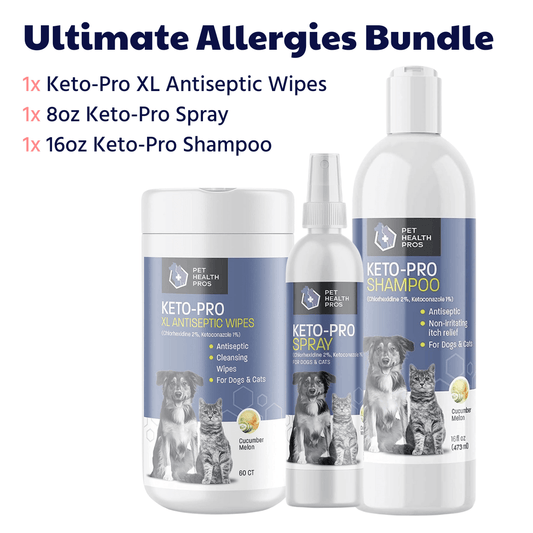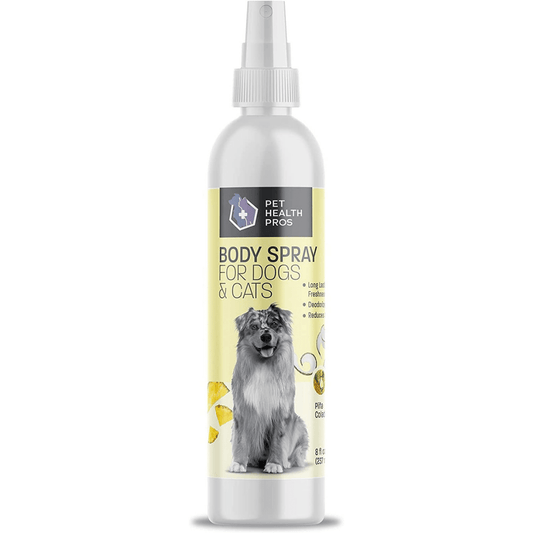Yeast infections in dogs' ears can be a troublesome issue, affecting their comfort and overall health. This article delves into understanding this condition, from identifying symptoms to exploring various treatment options and preventive measures. With insights into diagnosis, management, and real-life success stories, the goal is to equip pet owners with the knowledge needed to effectively address and prevent yeast infections in their furry companions' ears.
Key Takeaways
- Recognizing the early signs and symptoms of yeast infections in dogs' ears is crucial for timely intervention.
- A combination of factors, including diet, environment, and genetics, can contribute to the development of yeast infections.
- Veterinary diagnosis and understanding test results are essential steps in formulating an effective treatment plan.
- A range of treatment options is available, including medicated treatments, natural remedies, and regular cleaning and maintenance.
- Preventive measures, such as dietary adjustments and regular ear cleaning, are key to minimizing the risk of recurrence.
Identifying Yeast Infection in Your Dog's Ears
Recognizing the Symptoms
Yeast infections in a dog's ears can manifest through a variety of symptoms that are crucial for pet owners to recognize. Persistent scratching or pawing at the ears is often the first sign that something is amiss. Additionally, you might notice a distinct, unpleasant odor emanating from the ears, which is a hallmark of yeast overgrowth. Other symptoms include:
- Redness or swelling inside the ear
- Brown, yellow, or bloody discharge
- Crusts or scabs on the inside of the outer ear
- Hair loss around the ear area
- Head shaking or tilting
It's important to note that while these symptoms can indicate a yeast infection, they can also be signs of other ear problems. Therefore, a veterinary consultation is essential for an accurate diagnosis.
Understanding these symptoms is the first step in addressing your dog's discomfort and initiating the right treatment plan. Early detection and treatment are key to preventing more serious complications that can arise from untreated infections. Remember, a healthy ear environment is less susceptible to infections, highlighting the importance of regular ear care and maintenance.
Common Causes of Yeast Infections
Yeast infections in dogs' ears are primarily caused by an imbalance in the natural flora of the dog's ear canal, leading to an overgrowth of yeast. Factors contributing to this imbalance include excessive moisture, allergies, hormonal imbalances, and the use of antibiotics that disrupt the normal microbial environment. Allergies are one of the most common triggers for yeast infections in dogs, as they can lead to excessive ear scratching and subsequent damage to the ear canal, creating an ideal environment for yeast overgrowth.
- Excessive moisture in the ear canal from swimming or bathing
- Allergies to food, pollen, or environmental factors
- Hormonal imbalances, such as hypothyroidism
- Use of antibiotics that disrupt the ear's natural flora
It's crucial to identify and address the underlying cause of the yeast infection to effectively treat and prevent future occurrences.
The Role of Diet and Environment
The diet and environment of your dog play a crucial role in the prevention and management of yeast infections in their ears. A balanced diet rich in nutrients can support a healthy immune system, which is essential in fighting off infections. Foods high in sugars and carbohydrates, on the other hand, can promote the growth of yeast.
Certain environmental factors, such as humidity and warmth, can also create ideal conditions for yeast to thrive. It's important to keep your dog's living area clean and dry to minimize these risks.
Note: Regularly cleaning your dog's ears and monitoring for any signs of discomfort can help in early detection and treatment of yeast infections.
Here are some dietary adjustments that may help prevent yeast infections:
- Incorporate probiotics into your dog's diet to maintain a healthy balance of bacteria and yeast.
- Avoid foods that are high in sugars and simple carbohydrates.
- Ensure your dog has access to clean, fresh water at all times.
By paying attention to your dog's diet and environment, you can significantly reduce the risk of yeast infections in their ears.
Diagnosis and Understanding
How Vets Diagnose Yeast Infections
Veterinarians employ a variety of methods to diagnose yeast infections in dogs' ears, ensuring the treatment is accurately targeted to the problem. A thorough examination of the ear is the first step, which may include visual inspection and palpation to assess any inflammation, discharge, or odor. Following this, vets often perform a cytology test, where a sample of ear debris is collected and examined under a microscope to identify yeast cells.
A cytology test is crucial for confirming the presence of yeast and determining the appropriate treatment.
Additionally, vets may use other diagnostic tools such as culture tests to identify the specific strain of yeast, which can help in selecting the most effective medication. Understanding the test results is key to a successful treatment plan, as it allows for the customization of therapy based on the specific needs of the dog's condition.
Understanding the Test Results
After your vet conducts tests for a yeast infection in your dog's ears, understanding the results is crucial for effective treatment. The test results will typically indicate the severity of the infection and the specific strain of yeast involved. Knowing the exact strain is essential as it helps in selecting the most effective medication.
Yeast infections in dogs' ears can vary greatly in severity, and the treatment plan must be tailored accordingly. For example, a mild infection might only require topical treatments, while a more severe infection could necessitate oral medications in addition to topical solutions.
It's important to follow your vet's treatment plan closely to ensure the best outcome for your dog.
Additionally, the test results can provide insights into possible underlying conditions that may have contributed to the yeast infection, such as allergies or hormonal imbalances. Addressing these underlying issues is key to preventing future infections.
Treatment Options
Medicated Treatments
When it comes to treating yeast infections in your dog's ears, medicated treatments are often the first line of defense prescribed by veterinarians. These treatments typically include antifungal ear drops or ointments that are specifically designed to combat the yeast overgrowth. It's crucial to follow the veterinarian's instructions carefully to ensure the medication is effective and to prevent any potential side effects.
Antibiotics may also be prescribed if there's a secondary bacterial infection alongside the yeast infection. It's important to note that the duration of treatment can vary depending on the severity of the infection.
Remember, never use over-the-counter medications without consulting your vet first.
For a clearer understanding, here's a list of common medicated treatments:
- Antifungal ear drops
- Topical ointments
- Oral antifungal medications
- Antibiotics (for secondary bacterial infections)
Natural and Home Remedies
Exploring natural and home remedies for yeast infections in dogs' ears can offer gentle, yet effective solutions. Apple cider vinegar, diluted with water, is a popular choice due to its antifungal properties. A simple mixture of 50% apple cider vinegar and 50% water can be used to gently clean the affected area, promoting a healthier ear environment.
Coconut oil is another natural remedy known for its antifungal and antibacterial benefits. Applying a small amount to the inside of the dog's ear can help soothe irritation and combat the yeast infection.
Remember, while natural remedies can be helpful, they should not replace professional veterinary advice, especially in severe cases.
For those considering natural approaches, here's a brief list of remedies:
- Diluted apple cider vinegar for cleaning
- Coconut oil for soothing and antifungal action
- Aloe vera to reduce inflammation
- Herbal ear drops designed for dogs
It's essential to monitor your dog's response to these treatments and consult with a vet if there's no improvement or if symptoms worsen. Adjusting the approach based on your dog's specific needs and condition is crucial for effective management and recovery.
The Importance of Cleaning and Maintenance
Maintaining a clean environment for your dog's ears is crucial in preventing and treating yeast infections. Regular cleaning and maintenance can significantly reduce the risk of infection, ensuring your dog's ears remain healthy. It's important to use the right products that are safe and effective for your dog's specific needs.
- Use a gentle, vet-approved ear cleaner.
- Clean the ears regularly, but avoid over-cleaning as it can lead to irritation.
- After swimming or bathing, dry your dog's ears thoroughly.
- Check the ears weekly for signs of infection, such as redness or a bad odor.
Note: Always follow the instructions on the ear cleaning solution and consult your vet if you're unsure about the cleaning process.
Choosing the right products for ear cleaning and maintenance is vital. Products recommended by veterinarians and made in the USA are often a reliable choice, ensuring quality and safety for your pet. Remember, a proactive approach to ear care can prevent many issues before they start.
Prevention Strategies
Dietary Adjustments for Prevention
Making dietary adjustments is a crucial step in preventing yeast infections in your dog's ears. A balanced diet that supports the immune system can significantly reduce the risk of infections. Incorporating probiotics into your dog's diet can help maintain a healthy balance of bacteria and yeast in the body, which is essential for preventing ear infections.
- Probiotics: Enhance gut health and balance microflora
- High-quality proteins: Support immune function
- Omega-3 fatty acids: Reduce inflammation
A species-appropriate diet for dogs, high in protein and fat, can improve overall health, digestion, immune system, and energy levels. It includes natural and raw ingredients that mimic the diet of wild ancestors. This approach not only helps in preventing yeast infections but also promotes a healthier lifestyle for your dog.
It's important to consult with a veterinarian before making any significant changes to your dog's diet, especially if they have existing health issues.
Regular Ear Cleaning Routine
Establishing a regular ear cleaning routine is crucial for preventing yeast infections in your dog's ears. Consistent cleaning can help remove debris and wax that yeast thrives on, reducing the risk of infection.
- Step 1: Gently lift your dog's ear flap to expose the ear canal.
- Step 2: Use a vet-recommended ear cleaner. Apply the cleaner into the ear canal, being careful not to insert the applicator too deep.
- Step 3: Massage the base of the ear gently to help the cleaner reach deeper areas.
- Step 4: Allow your dog to shake its head to assist in removing the excess cleaner and debris.
- Step 5: Wipe away any remaining cleaner and debris from the ear flap and around the ear with a soft, damp cloth or a cotton ball.
It's important to use products that are specifically designed for dogs, as their ears are more sensitive than humans'. Products with harsh chemicals can cause irritation or worsen existing conditions.
Choosing the right products for ear cleaning is essential. Look for options that are gentle yet effective, and avoid those with harsh chemicals or ingredients that could irritate your dog's sensitive ears. Consulting with a vet can provide personalized recommendations based on your dog's specific needs and health condition.
When to Consult a Vet for Preventive Measures
Consulting a veterinarian for preventive measures is crucial to ensure the long-term health and well-being of your dog, especially when it comes to preventing yeast infections in their ears. Early consultation can help identify potential risks and implement strategies to mitigate them before they escalate into more serious conditions.
It's essential to discuss various aspects of your dog's health during check-ups, including:
- Diet and nutrition
- Exercise and physical activity
- Vaccinations and preventive care
- Behavior and training
- Geriatric care
By maintaining open communication with your vet, you can tailor preventive measures to your dog's specific needs, ensuring they remain healthy and happy.
Remember, certain breeds may be more susceptible to ear yeast infections due to their anatomy, lifestyle, or genetic predispositions. Identifying these factors early on with the help of a vet can significantly reduce the risk of infections.
Monitoring and Managing Recurrences
Signs of Recurrence
Monitoring your dog for signs of a yeast infection recurrence is crucial for early intervention and management. Look out for similar symptoms that were present during the initial infection, such as head shaking, scratching at the ears, redness, and a noticeable odor emanating from the ears. These signs indicate that the yeast infection may have returned and requires attention.
It's important to note that some dogs are more prone to recurrent infections due to underlying conditions or sensitivities. Identifying and managing these factors can significantly reduce the likelihood of recurrence.
Early detection and treatment of recurrence can prevent more severe complications and ensure your dog's comfort and health.
- Head shaking
- Scratching at the ears
- Redness in the ear canal
- Odor from the ears
By keeping a close eye on these symptoms and acting promptly, you can help manage and prevent the recurrence of yeast infections in your dog's ears.
Managing Chronic Conditions
Managing chronic conditions in dogs with recurrent yeast infections in their ears requires a comprehensive approach that focuses on both treatment and prevention. Regular monitoring and adjustments to treatment plans are essential for managing these conditions effectively. It's important to work closely with your vet to tailor a plan that suits your dog's specific needs.
Regular vet visits are crucial for monitoring the condition and making necessary adjustments to the treatment plan. Additionally, maintaining a healthy lifestyle for your dog, including proper diet and regular exercise, can help manage symptoms and prevent recurrences.
Note: Chronic conditions may require long-term management strategies, including periodic medication adjustments and lifestyle changes.
Understanding the underlying causes of chronic yeast infections can also play a significant role in managing the condition. Factors such as allergies, hormonal imbalances, or compromised immune systems can contribute to the recurrence of infections. Identifying and addressing these factors with your vet can help in developing a more effective management plan.
Adjusting Treatment Strategies Over Time
As your dog's condition evolves, so too should the treatment plan. Adapting treatment strategies over time is crucial to managing yeast infections in your dog's ears effectively. This may involve switching medications, altering dosages, or incorporating new cleaning routines based on the dog's response to initial treatments.
It's important to maintain open communication with your veterinarian, who can provide guidance based on the latest research and their experience with similar cases. Regular check-ups allow for adjustments to be made before minor issues escalate into more serious problems.
- Monitor your dog's symptoms closely
- Keep a record of treatments and their outcomes
- Schedule regular veterinary visits for reassessment
Choosing a veterinarian who is willing to create a personalized care plan for your dog is essential for their health and wellbeing. This plan includes regular check-ups, vaccinations, preventative treatments, and recommendations for nutrition and exercise.
Case Studies and Success Stories
Real-Life Recovery Journeys
The journey to recovery from a yeast infection in a dog's ears can be both challenging and rewarding. Through the stories of pet owners who have navigated this path, we gain invaluable insights into effective treatments and the importance of perseverance. One common thread among these stories is the significant role that timely intervention and the right treatment plan play in recovery.
- Suzanne M. Horn found the best skin treatment for her dog, highlighting the effectiveness of medicated solutions.
- Patricia Salazar experienced a turnaround with antiseptic wipes, noting the rapid improvement in her bloodhound's condition.
- Martin Jackman observed a remarkable improvement in his dog's joint health with a K9 chew, indirectly benefiting ear health by boosting overall wellness.
Each story underscores the critical importance of selecting appropriate treatments and the positive impact of dedicated care on a dog's recovery journey.
Choosing the right products and following a vet's advice are pivotal in treating and managing ear yeast infections in dogs. Success stories not only provide hope but also practical strategies that can be adapted to help other dogs facing similar issues.
What We Can Learn from Success Stories
Success stories in treating yeast infections in dogs' ears offer invaluable insights into effective treatment strategies and preventive measures. Each story is a testament to the importance of early diagnosis and the right treatment approach. These narratives not only provide hope but also practical advice for pet owners facing similar challenges.
- Timely intervention can significantly reduce the severity of the infection.
- Choosing the right products is crucial for effective treatment and prevention.
- Regular monitoring and maintenance can prevent recurrences.
- Consulting a vet at the first sign of trouble ensures the best outcome.
By analyzing these success stories, we can identify patterns and strategies that lead to positive outcomes. This knowledge can guide us in making informed decisions about our pets' health.
Understanding the role of diet, environmental factors, and the selection of medicated or natural treatments is crucial. Adjusting these elements based on the specific needs of our pets can lead to a healthier, happier life free from the discomfort of yeast infections.
Choosing the Right Products
Recommended Products for Treatment and Prevention
When selecting products for treating and preventing yeast infections in your dog's ears, it's crucial to choose those that are vet-recommended and specifically designed for otic health. Products range from medicated ear drops and wipes to dietary supplements that support overall ear health.
Here are some top picks:
- Medicated Ear Drops: Essential for directly addressing the infection.
- Antiseptic Wipes: For regular cleaning and preventing infection.
- Probiotic Supplements: Support the ear's microbiome, promoting a healthy balance of bacteria.
It's important to ensure that any product you choose is suitable for your dog's specific needs and is used according to the instructions provided.
Remember, while these products can be highly effective, they should be part of a comprehensive care plan that includes regular cleaning and vet check-ups.
Understanding Product Ingredients and Their Effects
When selecting products for treating and preventing yeast infections in your dog's ears, understanding the ingredients is crucial. Ingredients such as garlic, coconut oil, and apple cider vinegar have been highlighted for their potential to combat yeast overgrowth and reduce symptoms of ear infections. It's important to choose products that contain these or similar beneficial ingredients.
Note: Always consult with a vet before introducing any new product or ingredient into your dog's care routine to ensure it's safe and suitable for their specific health needs.
Additionally, be wary of products with harsh chemicals or unnecessary additives that could irritate your dog's sensitive ear canal. Opting for products with natural and gentle ingredients can be a safer choice for maintaining ear health. Here's a brief list of ingredients commonly found in ear care products and their intended effects:
- Garlic: Known for its antifungal properties.
- Coconut Oil: Helps in soothing the skin and reducing inflammation.
- Apple Cider Vinegar: Creates an acidic environment that can hinder yeast growth.
By understanding the effects of these ingredients, you can make more informed decisions about the products you use for your dog's ear care.
Conclusion
Summary of Key Points
In the journey to understanding and treating yeast infections in dogs' ears, we've covered a broad spectrum of topics, from identifying symptoms and causes to exploring various treatment and prevention strategies. Early detection and appropriate treatment are crucial in managing this condition effectively. A comprehensive approach, including both medicated treatments and natural remedies, alongside regular cleaning and maintenance, can significantly improve outcomes for affected dogs.
- Recognizing the Symptoms
- Common Causes of Yeast Infections
- Medicated Treatments and Natural Remedies
- Importance of Cleaning and Maintenance
- Dietary Adjustments for Prevention
It's essential to consult a vet for a proper diagnosis and tailored treatment plan, especially in cases of recurrent infections or chronic conditions. Adjusting treatment strategies over time and closely monitoring for signs of recurrence are key to managing this condition effectively.
Final Thoughts on Caring for Dogs with Ear Yeast Infections
Caring for a dog with ear yeast infections requires patience, diligence, and a proactive approach to prevent recurrences. Early detection and treatment are crucial to managing this condition effectively. By understanding the symptoms and causes, you can take steps to mitigate risks and ensure your dog's comfort and health.
It's essential to maintain a regular ear cleaning routine and consult your vet for the best preventive measures. This not only helps in early detection but also in preventing the condition from worsening.
Remember, every dog is unique, and what works for one may not work for another. Tailoring the treatment and preventive measures to your dog's specific needs is key. Regular check-ups with your vet can help adjust the treatment plan as needed, ensuring the best care for your furry friend.
- Recognize the symptoms early
- Maintain a clean and dry ear environment
- Consult your vet for tailored treatment and preventive measures
- Regularly monitor your dog's ear health
By following these steps, you can help your dog lead a happier, healthier life, free from the discomfort of ear yeast infections.
Conclusion
Understanding and treating yeast infections in dogs' ears is crucial for their well-being and comfort. These infections, often caused by an overgrowth of yeast, can lead to discomfort, itching, and even more severe health issues if left untreated. Recognizing the signs early and consulting with a veterinarian for proper diagnosis and treatment can help manage these infections effectively. Additionally, maintaining regular ear hygiene and monitoring for any signs of discomfort in your dog's ears can prevent future occurrences. With the right care and attention, yeast infections in dogs' ears can be treated successfully, ensuring your furry friend remains happy and healthy.
Frequently Asked Questions
How can I tell if my dog has a yeast infection in its ears?
Symptoms of a yeast infection in dogs' ears include itching, redness, a noticeable odor, discharge that is often brown or yellow, and unusual head shaking or tilting. If your dog exhibits these signs, it's likely they have a yeast infection.
What causes yeast infections in dogs' ears?
Yeast infections can be caused by a variety of factors including allergies, excessive moisture within the ear, wax buildup, hormonal imbalances, or weakened immune systems.
Can diet affect my dog's risk of getting a yeast infection?
Yes, diet plays a significant role in your dog's overall health, including the balance of yeast. Diets high in sugars and carbohydrates can fuel yeast growth, so it's important to choose a diet that supports your dog's health.
What are some natural remedies for treating yeast infections in dogs' ears?
Natural remedies include using diluted apple cider vinegar, coconut oil, or aloe vera to clean the infected area. However, it's important to consult with your vet before trying any home remedies.
How often should I clean my dog's ears to prevent yeast infections?
Regular cleaning depends on your dog's breed, activity level, and ear health. Generally, checking and cleaning your dog's ears weekly with a vet-recommended cleaner can help prevent infections.
When should I see a vet for my dog's ear yeast infection?
If your dog shows signs of discomfort, the infection doesn't improve with initial treatment, or if you're unsure about the condition, it's crucial to consult a vet. They can provide a proper diagnosis and treatment plan.









